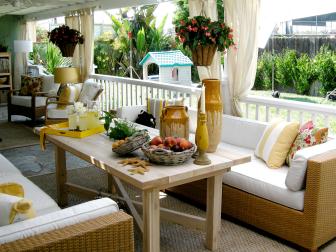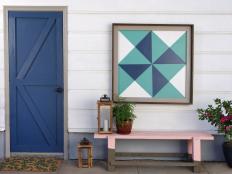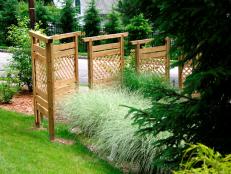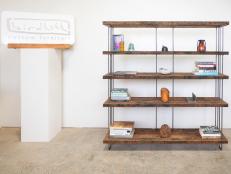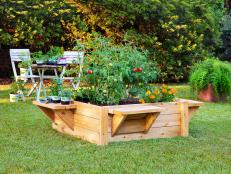Is Cedar a Hardwood?
This versatile wood has many useful qualities, but hardness isn’t one of them.
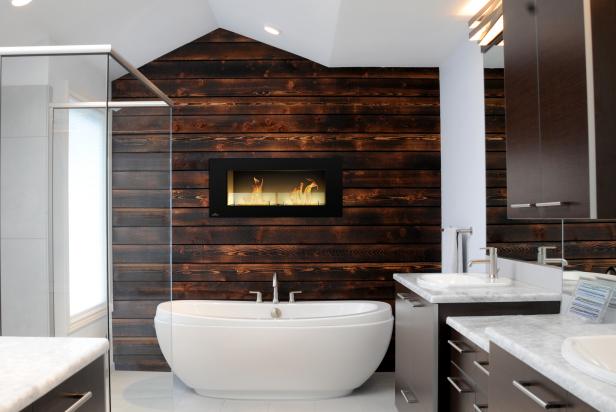
Fraley and Company
Cedar's good looks make it a popular choice for paneling on walls and ceilings.
No, cedar is not a hardwood. This iconic wood, known throughout the world for its beauty, versatility and spicy aroma, is a softwood. It belongs to a group of plants known as “gymnosperms,” which includes most conifers, such as pine and fir trees. The common term for all gymnosperms is softwoods. But that doesn’t mean all softwoods are lightweights. The lumber of some species, such as Douglas-fir, is hard, strong and is used throughout the construction industry for framing and structural supports.
Although cedar tends toward the lower end of the hardness scale, it’s popular for its combination of good looks, light weight and usability. It has warm red tones with creamy sapwood streaks and is prized as a natural wood finish for ceilings, walls and wainscoting. It’s not as strong as Douglas-fir, but cedar can be milled into structural members and often is specified for architectural designs that include exposed posts, beams and rafters.
Using Cedar Outdoors
Outside, cedar has natural weather-resistant properties that make it a good choice for siding, shingles, decking, greenhouses, arbors and fences. It’s considered to be a “durable” wood that can withstand exposure to the elements, but it’s not completely rot-resistant. It doesn’t do well in direct contact with the ground and is susceptible to attack from some kinds of insects. Regular upkeep helps protect cedar. Clear sealers, applied every 2 to 3 years, keep exterior cedar looking fresh.
Cedar in Action
See All PhotosAvailability
Cedar is widely available but more expensive than other comparable woods. You’ll pay about 30% more for regular-grade 1x6 tongue-and-groove cedar paneling than for the same type of paneling made of pine.
The most common type of commercially available cedar is western red cedar. Other types of cedar include:
Incense cedar is famous for its heady aroma. It’s light brown with streaks of dark red and is a very durable, weather-resistant wood. It cuts and shapes easily and is a favorite with furniture builders who use it for making sweetly scented drawers and clothes storage chests. The tight, non-splintering grain of incense cedar is also used to make pencils.
Port Orford cedar is rare and not readily available. It grows only in southern Oregon and northern California, and only small amounts are harvested from private lands. Accordingly, it’s very expensive. It has similar properties of other cedars, but its real charm is its amazing aroma — a spicy, lemony blend that’s unlike anything in the world of wood. It’s used for small specialty items such as candlesticks and toys.
Alaskan yellow cedar grows in Alaska and Canada. It’s a beautiful, straight-grain wood that’s a creamy yellow color. It’s strong and relatively hard for a cedar and is used where a combination of strength and weather-resistance is important, such as park benches, bleachers and marine construction.
The Janka Scale
The hardness of various woods gives an idea of how it can be used. For example, a very hard wood is good for flooring. To measure and evaluate wood hardness, the wood products industry developed the Janka scale. Red maple, used for gym floors and butcher blocks, has a Janka rating of 950. Although western red cedar has a Janka rating of only 320, that doesn’t mean it isn’t strong — but it does indicate the wood could dent if exposed to high foot traffic and other impacts.
Here are Janka numbers for some common woods. Higher numbers mean harder woods:
- Birch, yellow: 1260
- Basswood, American: 410
- Cedar, Alaskan: 580
- Cedar, incense: 470
- Cedar, Port Orford: 720
- Cherry, black: 950
- Oak, northern red: 1290
- Pine, ponderosa: 460
- Walnut, black: 1010










